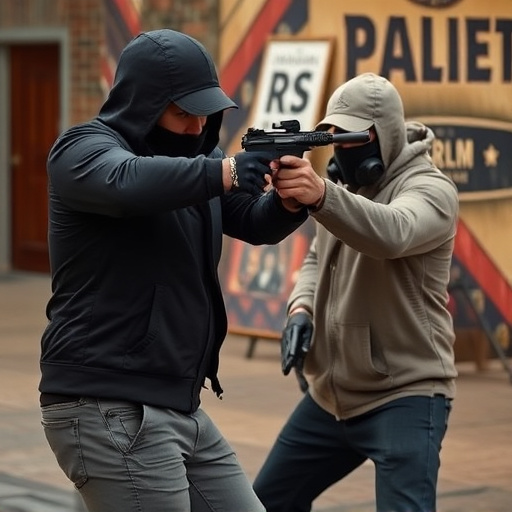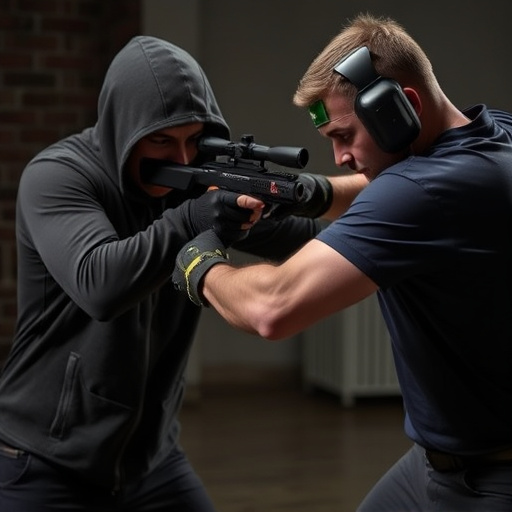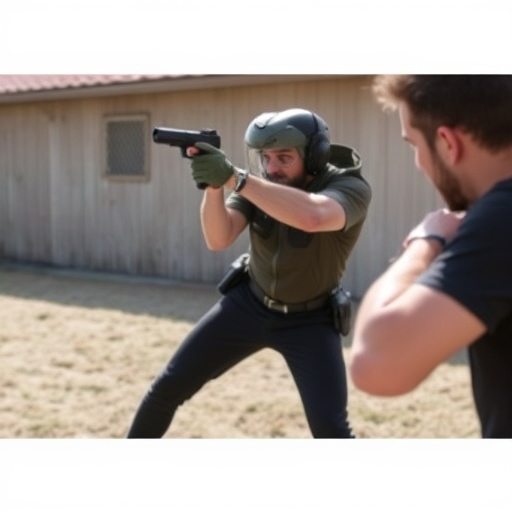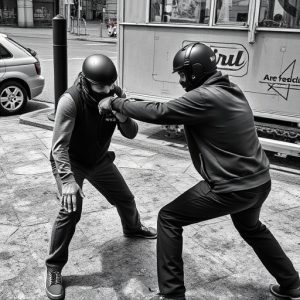Taser Paralysis Duration: Exploring Police Stun Gun Impacts & Safety Measures
Taser deployment, a tactical tool for law enforcement, aims to temporarily immobilize individuals in…….
Taser deployment, a tactical tool for law enforcement, aims to temporarily immobilize individuals in high-risk situations with varying effectiveness based on model, distance, and target's condition. Paralysis duration ranges from seconds to minutes, influenced by factors like current intensity, body composition, and environmental conditions. Choosing the right Police Grade Stun Gun Options requires understanding these variables to ensure effective control while minimizing risks. Proper training is vital for mitigating risks, enhancing safety, and mastering proper technique to balance public safety with individual rights during Taser deployment.
“In today’s high-stakes law enforcement scenarios, understanding the effects of taser deployment and its resulting paralysis duration is crucial. This article delves into the complex factors influencing how long individuals remain paralyzed after a stun gun is activated. We explore ‘Police Grade Stun Gun Options’ and their varying features, offering insights into effectiveness across diverse situations. Additionally, legal considerations and safety mitigation strategies through proper training are discussed to ensure responsible use.”
- Understanding Taser Deployment and Its Impact
- Factors Influencing Paralysis Duration
- Police Grade Stun Gun Options: Features and Effectiveness
- Legal Considerations and Guidelines
- Mitigating Risks and Enhancing Safety with Proper Training
Understanding Taser Deployment and Its Impact

Taser deployment is a significant tactical decision made by law enforcement officers in high-risk situations, aiming to immobilize individuals swiftly and temporarily. These stun guns, known as Tasers, fire probes containing small electrical charges that disrupt muscle control, leading to paralysis or a ‘stun’ effect. The impact of Taser deployment can vary based on several factors, including the model of the weapon, the distance between the officer and the target, and the individual’s physical condition. Understanding these variables is crucial when evaluating potential durations of paralysis caused by different Police Grade Stun Gun Options.
The duration of a stun from a Taser can last anywhere from a few seconds to several minutes, with some advanced models offering extended immobilization periods. The effect of the current disrupts nerve impulses in the body, temporarily paralyzing muscles. However, it’s essential to consider that individuals may regain movement before the weapon wears off due to varying resistance levels and physical attributes. Different Taser models are designed for specific scenarios, with manufacturers providing guidelines on deployment and expected durations. Choosing the right Police Grade Stun Gun Option requires a thorough understanding of these factors to ensure effective immobilization while minimizing risks.
Factors Influencing Paralysis Duration

Several factors can influence the duration of paralysis caused by a Taser deployment, which varies across different models of police-grade stun guns. One key factor is the electrical current and its intensity, with higher voltages potentially extending the period of neuromuscular disruption. The design and technology employed in the Taser also play a role; newer models often incorporate advanced features to reduce recovery time.
Additionally, individual variations in body composition, muscle mass, and pre-existing health conditions can impact how long a person remains paralyzed. Age is another significant consideration, as older individuals may experience longer durations of paralysis compared to younger subjects. Environmental factors, such as temperature and humidity, might also subtly affect the intensity and duration of Taser stun effects.
Police Grade Stun Gun Options: Features and Effectiveness

Police-grade stun guns, also known as tactical electric weapons, are designed for professional law enforcement use and offer a range of options with varying features and levels of effectiveness. These devices typically deliver a powerful electrical shock that can incapacitate a target, providing officers with a crucial tool for self-defense and crowd control. When considering police grade stun gun options, several key factors come into play: voltage output, energy delivery method, shot range, and build quality.
The voltage output is a critical specification as it directly impacts the stun gun’s effectiveness. Higher voltages can penetrate clothing and cause muscular contractions, leading to immobilization. Energy delivery methods also vary, with some models employing probes for direct contact and others using a handheld design for projecting an electric field over a larger area. Shot range refers to the distance at which the stun gun can deliver a sufficient jolt, and it’s essential for officers to consider their typical deployment scenarios when choosing between police grade stun gun options. Build quality is another vital aspect, as durable construction ensures reliability in high-stress situations.
Legal Considerations and Guidelines

Paralysis duration from Taser deployment is a critical aspect that intersects with legal considerations and guidelines governing police use of force. Law enforcement agencies and courts across the globe have established protocols to ensure the safe and responsible use of stun guns, also known as Tasers. These guidelines are designed to balance public safety with individual rights, with specific attention paid to minimizing the risk of excessive force and prolonging physical immobilization.
Police grade stun gun options, an essential component in modern law enforcement arsenal, come with pre-set parameters for deployment duration and intensity. These devices deliver a high-voltage electrical impulse that temporarily paralyses a subject, allowing officers to control and subdue them. However, the use of Tasers is not without legal repercussions; excessive or inappropriate use can lead to civil rights violations, injuries, and even death. Therefore, law enforcement personnel must adhere strictly to training protocols and guidelines when employing these tools, ensuring that paralysis duration remains within safe and legal limits.
Mitigating Risks and Enhancing Safety with Proper Training

Proper training is paramount in mitigating risks and enhancing safety when officers carry police-grade stun guns. With the right education, law enforcement personnel can effectively deploy these devices while minimizing potential hazards for both the user and bystanders. Training programs should cover not only the technical aspects of stun gun operation but also scenario-based simulations to prepare officers for real-world situations. By mastering proper technique and understanding the duration of paralysis from tasers, officers can ensure they incapacitate suspects effectively while maintaining control over the situation.
Choosing among various police grade stun gun options should be guided by comprehensive training needs. Officers equipped with adequate knowledge and skills are better prepared to handle unexpected events and reduce the risk of excessive force. Properly trained personnel can navigate challenging scenarios, making informed decisions that balance public safety and the de-escalation of potentially violent situations. This enhances the overall effectiveness and legitimacy of law enforcement operations.
The duration of paralysis following Taser deployment is a complex factor influenced by various elements, including the model of stun gun used, body position, and individual physiology. This article has explored the impact of Taser use, highlighting the importance of understanding the potential risks and mitigating them through proper training and equipment selection. When it comes to Police Grade Stun Gun Options, features such as voltage output and probe design play a significant role in effectiveness and safety. Adhering to legal guidelines and ensuring comprehensive training can help reduce the duration of paralysis and enhance overall operational security.


